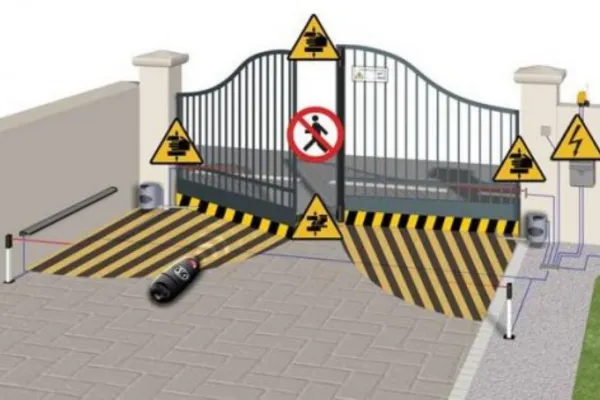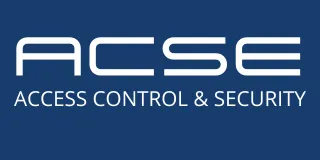
Enhancing Gate Safety with Proper Entrapment Protection Devices
Automatic gates are a vital part of modern access control, providing convenience and security for residential, commercial, and industrial properties. However, without the proper safety measures in place, these systems can pose risks to users and nearby pedestrians. One of the most critical components for ensuring gate safety is the inclusion of effective entrapment protection devices. These devices are designed to prevent accidents by detecting and addressing potential hazards during gate operation.
This article explores the importance of entrapment protection devices, the types available, and how to implement them correctly to ensure compliance with safety standards like UL 325 and ASTM F2200.
The Importance of Entrapment Protection Devices
Entrapment protection devices play a key role in preventing injuries and property damage caused by moving gates. Without these safety mechanisms, gates can inadvertently trap individuals, vehicles, or objects, leading to accidents or legal liabilities.
Why Are These Devices Essential?
Prevent Injuries:
Automatic gates are heavy and powerful. Without safeguards, they can cause serious injuries to users, especially children or unsuspecting pedestrians.
Ensure Compliance:
Standards like UL 325 mandate the use of entrapment protection devices in all automated gate systems. Non-compliance can lead to fines, lawsuits, or insurance complications.
Enhance User Confidence:
Property owners are more likely to trust and recommend gate systems that prioritize safety, boosting your reputation as an installer or integrator.
Types of Entrapment Protection Devices
There are several types of devices available, each designed to address specific safety concerns. Understanding their functionality can help you select the right combination for your gate system.
1. Photoelectric Sensors (Safety Beams)
How They Work:
Emit an invisible beam of light across the gate’s path.
If the beam is interrupted, the system stops or reverses the gate’s movement.
Advantages:
Reliable and cost-effective.
Ideal for detecting people, vehicles, or objects in the gate’s path.
Best Applications:
Residential and commercial gates with moderate traffic.
2. Gate Edge Sensors
How They Work:
Installed along the edges of the gate.
When the edge contacts an obstruction, it triggers the system to stop or reverse the gate.
Advantages:
Effective for sliding and swinging gates.
Provides immediate response upon contact.
Best Applications:
Gates in high-traffic areas or where physical contact is likely.
3. Inherent (Built-In) Safety Features
How They Work:
Embedded within the gate operator.
Use sensors to detect resistance or obstructions in the gate’s movement.
Advantages:
No additional hardware required.
Always active and integrated into the system.
Best Applications:
Entry-level installations with minimal external components.
4. Loop Detectors
How They Work:
Installed under the ground near the gate.
Detect the presence of vehicles by sensing metal objects.
Advantages:
Prevent gates from closing on vehicles.
Useful for high-traffic environments like parking lots or industrial sites.
Best Applications:
Vehicle-heavy environments such as warehouses, commercial parking, or gated communities.
5. Audible and Visual Alarms
How They Work:
Emit a warning sound or flashlights when the gate is in motion.
Advantages:
Increases awareness for users and bystanders.
Reduces the risk of accidents caused by inattentive behavior.
Best Applications:
Industrial or high-traffic areas where visibility and awareness are critical.
Best Practices for Implementation
Integrating entrapment protection devices effectively is key to ensuring they perform as intended. Follow these best practices to maximize safety:
1. Conduct a Risk Assessment
Evaluate the property layout and identify potential hazards such as tight spaces, uneven terrain, or high traffic areas.
2. Combine Multiple Devices
Use a combination of photoelectric sensors, edge sensors, and alarms to cover all potential risks. No single device can address every hazard.
3. Position Devices Strategically
Place sensors at appropriate heights to detect both vehicles and pedestrians.
Ensure alarms are visible and audible from all angles.
4. Test Regularly
Perform routine tests to ensure devices are functioning correctly.
Simulate obstruction scenarios to verify that the system stops or reverses as intended.
5. Educate the End User
Provide clear instructions to property owners or operators on how the safety features work.
Encourage users to report any malfunction immediately.
Compliance with Safety Standards
Installing entrapment protection devices is not just a recommendation—it’s a requirement under safety standards like UL 325 and ASTM F2200.
Key Compliance Guidelines:
UL 325:
Requires at least two forms of entrapment protection for automated gate systems.
Devices must be tested and listed to ensure reliability.
ASTM F2200:
Governs gate design to minimize hazards, such as eliminating pinch points or reach-through risks.
Specifies construction requirements, such as proper spacing between gate bars or panels.
Adhering to these standards not only ensures user safety but also protects installers from liability.
Common Mistakes to Avoid
Despite the availability of advanced devices, mistakes in installation or selection can compromise safety. Avoid these common errors:
Relying on a Single Device:
No single safety mechanism can address all risks. Use a layered approach.
Improper Sensor Placement:
Misaligned sensors may fail to detect obstructions, rendering them ineffective.
Neglecting Maintenance:
Dust, dirt, or weather damage can impair the functionality of sensors and alarms.
Failing to Update Systems:
Older systems may not meet current safety standards. Regular upgrades ensure continued compliance.
Conclusion
Entrapment protection devices are essential for enhancing gate safety, protecting users, and ensuring compliance with industry standards. By understanding the different types of devices available, implementing them strategically, and maintaining them regularly, you can create a safe and reliable automated gate system for any application.
Whether you’re an installer, system integrator, or property owner, investing in proper entrapment protection devices is not just a regulatory requirement—it’s a commitment to safety and peace of mind.
If you’re ready to improve the safety of your automated gate systems, reach out to experienced professionals who can guide you in selecting and implementing the right safety devices for your needs.

